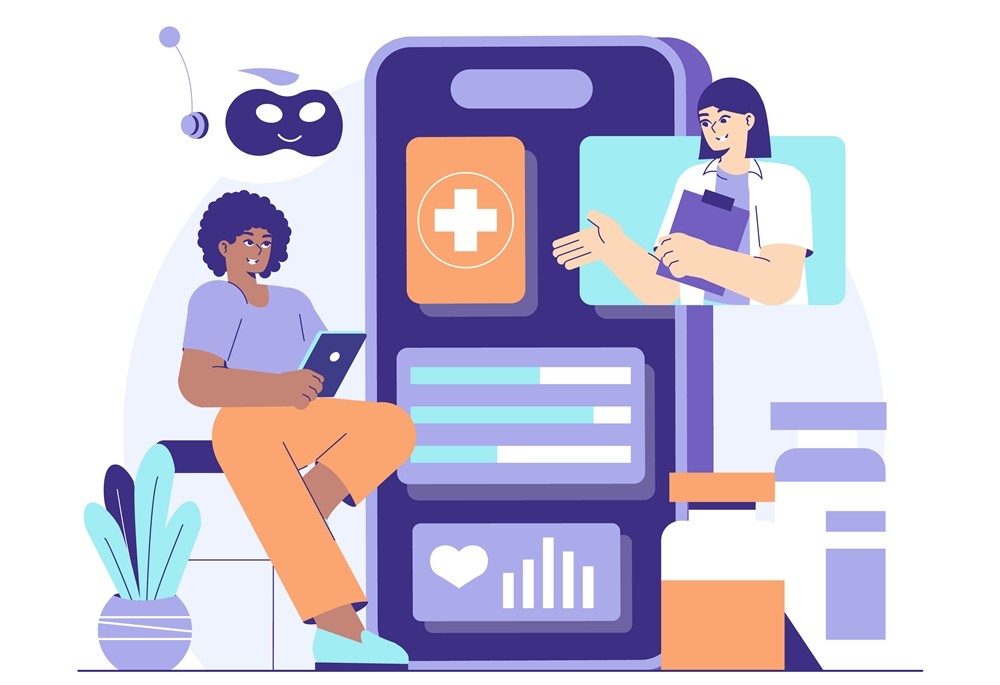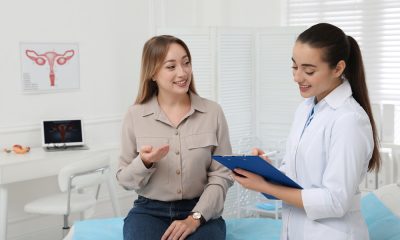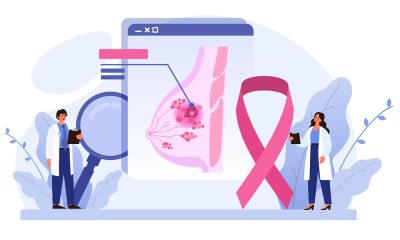Mental health
Welsh GPs report 43% rise in endometriosis knowledge after completing new training

A new training programme in Wales is helping GPs to recognise the symptoms of endometriosis earlier, the Welsh Government says.
The Endometriosis in Primary Care training has led to a 43 per cent improvement in GP knowledge of the condition, which affects around one in 10 women of reproductive age and causes tissue similar to the lining of the womb to grow elsewhere in the body, often leading to pain and infertility.
Part of Wales’ broader Women’s Health Plan, the training is delivered through Health Education and Improvement Wales and sits alongside modules covering urinary incontinence, premenstrual syndrome (PMS), and suspected gynaecological cancer.
Sarah Murphy, minister for mental health and wellbeing, said: “This training ensures women’s voices are central to their healthcare experience, and it helps GPs support their patients more effectively.
“Endometriosis can have a huge impact on a woman’s quality of life, their work and their relationships.
“I am determined our Women’s Health Plan will drive real improvements in women’s health outcomes and reduce inequalities.”
According to the Welsh Government, participating GPs recorded a 43 per cent improvement in their understanding of endometriosis following the training, which is based on the latest guidance from NICE and the European Society of Human Reproduction and Embryology.
GPs were assessed before and after completing the training, with results showing increased confidence in recognising symptoms and discussing treatment options with patients.
The rollout follows updates to NICE guidance in late 2024, which clarified the pathway of care for women suspected to have endometriosis.
This year, it approved two new at-home treatment options – relugolix combination therapy and Lingolix – for patients where previous medical or surgical intervention has not been successful.
Launched six months ago, the Women’s Health Plan identifies endometriosis as one of eight priority areas for improving healthcare.
It also sets out plans for a women’s health hub in every health board area, with pathfinder sites due by March 2026, and the establishment of Wales’ first women’s health research centre.
Dr Mirka Slavska, an obstetrics and gynaecology consultant at Aneurin Bevan University Health Board, who delivered the training, said: “The session covered differential diagnoses, referral pathways, novel diagnostic and treatment options, and introduced the Endometriosis Cymru symptom reporting tool.
“The excellent feedback we received reflects the value of equipping healthcare professionals with current, practical knowledge to improve care for those living with endometriosis.”
Dr Helen Munro, clinical lead for women’s health in Wales, said the planned hubs would be “central to meeting women’s healthcare needs across their life course”.
She added: “This is where healthcare professionals will join up with existing services to provide women’s health services within our communities.
“The needs of our local populations, together with existing resources and infrastructure will guide the design and delivery of the hubs.”
In March, NHS England announced it was actively assessing workforce training gaps and future needs in response to calls for more GP training in women’s reproductive health conditions.
This followed a report from the House of Commons Women and Equalities Committee, which found that patients with these conditions often experience “medical misogyny” under the care of GPs and other health professionals.
News
At-home abortions safe and effective up to 12 weeks, study finds

At-home abortions should be permitted for up to 12 weeks across the UK, researchers say, after finding they are as safe as procedures carried out in hospital.
The study reviewed outcomes of abortions between 10 and 12 weeks of pregnancy in NHS Lothian, Scotland, from 2020 to 2025.
Medical abortion involves taking two drugs – mifepristone and misoprostol – to end a pregnancy.
The World Health Organization recommends that early medical abortions can be managed safely at home during the first 12 weeks.
Legislation in England and Wales currently limits at-home care to 10 weeks, while Northern Ireland bans it altogether.
Scotland allows it up to 12 weeks.
Heidi Stewart, chief executive of the British Pregnancy Advisory Service, said: “This important study from Scotland adds to the already extensive body of evidence that at-home medical abortion between 10 and 12 weeks’ gestation is safe and effective.
“Thousands of women each year in the UK are being compelled to attend hospital appointments and undergo surgical procedures when, as this research makes clear, they could be treated at home.”
Researchers analysed 14,458 referrals to abortion services. Of these, 485 women (3.5 per cent) were assessed as 10 to 12 weeks pregnant, either by last menstrual period or ultrasound.
The study found that 97 per cent of abortions were successful, whether at home or in hospital.
Complications such as heavy bleeding or infection were rare.
One case of haemorrhage occurred a month later, but researchers said hospital admission at the time of abortion would not have prevented it.
They concluded that medical abortions at home between 10 and 12 weeks are “highly effective and safe.”
The authors said: “In line with WHO guidance, action is needed to extend [early medical abortion] at home up to 12 weeks to women across the rest of the UK and beyond.”
Stewart added: “When the abortion law was first passed in 1967, it was designed to protect and improve women’s health.
“Nearly 60 years later, this legislation is restricting our ability to innovate and develop services in line with clinical practice.
“It is time for parliament to modernise our out-of-date legal framework, and finally allow healthcare professionals to give all women in the UK the best possible care, including the choice of at-home medical abortion throughout the first trimester.”
News
Femtech describes a category. Women’s health describes a life

By Ema founder and CEO, Amanda Ducach
Ema’s claim to fame is that “she” was the first agentic AI for women’s health.
That means that as the CEO, I get to spend my days speaking with women’s health founders and funders about AI for women. And… I have noticed something that I wanted to share.
There’s a growing confusion in the market: “femtech” and “women’s health” are often used interchangeably. But while they’re deeply connected, they’re not the same.
All femtech is women’s health. But not all women’s health is femtech. Both matter. But the distinction matters, too.
Femtech: A Catalyst for Innovation, Not a Catch-All
Coined in 2016 by Clue founder Ida Tin, femtech provided a language for a long-overlooked corner of healthcare and has since become one of the fastest-growing verticals in digital health.
Femtech:
- Names a market that was previously invisible.
- Unlocks funding, innovation, and legitimacy.
- Centers historically neglected needs in health tech.
Today, femtech includes everything from fertility and contraception to menopause care, pelvic health, sexual wellness, mental health, and cancer screening.
It’s a category with momentum and one that is expanding.
But categories have limits. When we frame the full breadth of women’s health needs solely through the lens of femtech, we risk both narrowing the scope and limiting its impact.
That’s not a failure of the category. It’s a signal that we must build beyond it.
Women’s Health: Bigger Than a Market. More Complex Than a Milestone
Women’s health is a lifelong, whole-body experience.

Amanda Ducach
It spans:
- Cardiovascular, metabolic, neurological, and autoimmune conditions
- Mental health across life stages
- Hormonal transitions beyond reproduction (e.g., perimenopause, PCOS)
- The interplay of biology, identity, stress, and systemic bias
And yet, women remain underdiagnosed, undertreated, and underserved, partly because mainstream healthcare systems still don’t reflect their reality.
Women’s health encompasses more than just gynaecology. It’s a biopsychosocial model of care that sees women in full, not just in episodes.
Why the Distinction Matters
Femtech is growing, but funding remains concentrated in specific stages, including fertility, pregnancy, and postpartum. These are deeply important, but they’re just a fraction of the health journey.
Most of women’s health happens outside of reproduction.
Think: PMDD in adolescence, anxiety in early adulthood, migraines and autoimmune flare-ups, perimenopause in midlife, and heart disease risk post-menopause.
When investment flows into what’s easiest to monetise in the short term, we risk reinforcing a narrow story of what women need and when.
The result? Gaps in care, missed opportunities, and underserved lives. The risk isn’t that femtech is too small. It’s that we treat women’s health as if it is.
Femtech as a Bridge, Not a Box
The future isn’t about picking sides. It’s about connecting categories with complexity.
Femtech is an essential bridge: from invisibility to visibility, from stigma to innovation. But it’s not the endpoint. To meet women where they actually are, we must:
- Design for the whole hormonal arc, not just milestones.
- Expand data models to reflect lived experience across race, gender identity, and life stage.
- Invest in long-term conditions, not just urgent ones.
- Prioritise prevention, quality of life, and self-trust, not just outcomes that are easily measurable.
As the Health Innovation Network warns, without this evolution, even well-intentioned femtech could inadvertently widen the health equity gap.
The Bottom Line
Femtech is a powerful industry. Women’s health is a lifelong mission.
All femtech is women’s health. But not all women’s health is femtech.
Recognising that is how we build products and care systems that actually fit women’s lives.
Find out more about Ema at emaapp.co
News
Psilocybin may make postpartum depression worse, study finds

Psilocybin may heighten anxiety and depression in new mothers rather than help treat postpartum mental health conditions, research suggests.
Scientists found that giving mouse mothers the psychedelic drug – the active compound in magic mushrooms – increased anxiety and depressive-like behaviour linked to perinatal mood disorders, which are mental health conditions that can develop during or after pregnancy.
The results challenge assumptions about psilocybin’s therapeutic use, indicating it may not be suitable for all patient groups.
David E. Olson, director of the IPN and professor of chemistry, biochemistry and molecular medicine at UC Davis, said: “The IPN has done a lot of work demonstrating that a single dose of a psychedelic can lead to long-lasting, beneficial effects.
“But it’s a little more nuanced than that in terms of who can really benefit and who might be at risk.
“There are different patient populations.”
Researchers at the University of California, Davis Institute for Psychedelics and Neurotherapeutics tested the drug in a mouse model of postpartum depression.
In this model, mothers could escape into a separate cage, mimicking the infant avoidance seen in human postpartum depression.
The negative effects persisted for two weeks after a single dose.
More concerning, pups raised by psilocybin-treated mothers also showed anxiety and depression-like symptoms into adulthood, suggesting harmful effects were passed on through lactation and altered brain development.
Co-author Danielle Stolzenberg, associate professor of psychology at UC Davis, said: “One of the things that’s discussed consistently in the clinical literature is that mums often feel like they have trouble bonding with their infants when they’re experiencing depressive symptoms.
“The mouse mums in the social stress paradigm spend significantly more time in the cage without the pups.
“They will often run back and forth to check on them but tend to actively avoid their infants for long periods of time.”
The team had expected positive results given psilocybin’s reported benefits for other mental health conditions.
“Psilocybin was of such interest for us because it’s been demonstrated to be useful across a whole host of mental disorders, including addressing anxiety and depression,” said first author Cassandra Hatzipantelis, a postdoctoral fellow at the IPN.
“We thought it could have the ability to address things that go wrong in postpartum depression, like the parent-infant connection.”
Instead, the mouse mothers continued to avoid their offspring and showed persistent symptoms even after separation.
Psilocybin-treated mice were also at higher risk of behavioural impairments and depressive-like symptoms.
Nine weeks after weaning, both male and female offspring showed heightened anxiety and depression compared with control groups.
Their brains also contained traces of psilocin, the metabolite produced when the body processes psilocybin.
“We now know that even low doses of exposure can impact offspring for long periods of time,” Stolzenberg said.
“These could be really important therapeutics, but we also realise they have limitations, and we have to conduct rigorous science to understand what those limitations are,” Olson added.

 News4 days ago
News4 days agoScientists turn human skin cells into eggs in IVF breakthrough

 News5 days ago
News5 days agoFDA plans to revise black box warning on menopause hormone therapies

 Diagnosis5 days ago
Diagnosis5 days agoDaily pill could delay menopause ‘by years,’ study finds

 News4 days ago
News4 days agoMothers’, not fathers’, mental health directly linked to their children’s, study shows

 Hormonal health3 days ago
Hormonal health3 days agoManagers still unprepared to discuss menstrual health, study finds

 Hormonal health1 day ago
Hormonal health1 day agoAI-powered women’s health companion Nexus launches in UK

 News3 days ago
News3 days agoAncient herb to modern must-have: Why ashwagandha is capturing UK women’s attention

 News3 days ago
News3 days agoDrug improves survival in triple-negative breast cancer






















